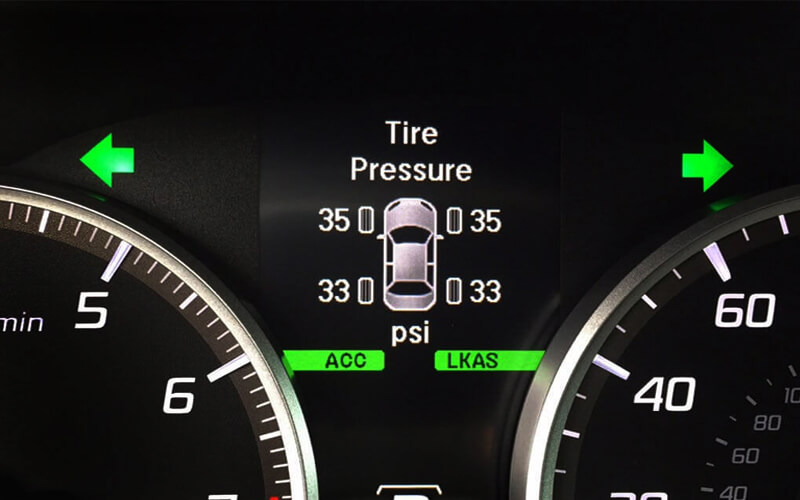Get a quote today
Are you looking for TPMS Replacement for your vehicle?

TPMS - TYRE PRESSURE MONITORING SYSTEM
A regulation has been in force throughout Europe since 2014: Tyre pressure monitoring systems have become mandatory for all new vehicles. A TPMS automatically checks the tyre pressure and warns as soon as the pressure drops at 25%. It thus ensures the safety of drivers - and the environment.
On this page, you will find all the essential information about Tyre Pressure Monitoring Systems.
TYRE PRESSURE MONITORING SYSTEMS FOR MORE SAFETY
The correct tyre pressure can be vital: If a tyre has too little air, for example, the braking distance will be longer. The tyre then also has less grip when going around bends, and the overall driving characteristics change noticeably.
DIRECT AND INDIRECT TPMS
Tyre pressure monitoring systems are mandatory for all new registrations from 01.11.2014, and the car manufacturer is responsible for installing them ex-works. Each manufacturer can choose between the indirect method and the direct method. With the indirect method, a central control unit measures the rolling circumference or the revolutions of the tyres and signals discrepancies. The direct method - the majority of manufacturers have opted for it - works with pressure sensors in each tyre. These sensors continuously check air pressure and temperature and display the changes on the dashboard.
Whether direct or indirect: The system installed cannot be seen from outside, but only with an appropriate diagnostic device. And: Even if your car was manufactured before November 2014, it might already be equipped with TPMS. Some manufacturers have been equipping their vehicles with it since the beginning of 2014.
If you are in doubt, it is best to let our PBT Supplies Ltd. team have a look.
INDIRECT METHOD
The indirect tyre pressure monitoring system (TPMS) uses the existing sensors of the ESP/ABS: they determine the tyre pressure via the tyre speed because the speed increases automatically in the event of a pressure loss. This data is sent to the central control unit (ECU = Electronic Control Unit), and as soon as a pressure loss occurs, a warning message appears on the dashboard.
Compared to the direct tyre pressure monitoring system, the indirect method is less accurate because it does not determine the exact pressure loss or the tyre's temperature. In addition, it can only collect data when the vehicle is moving - no measurements are taken when the vehicle is stationary.
DIRECT METHOD
The direct tyre pressure monitoring system (TPMS) monitors tyre pressure using sensors in each tyre - they measure the pressure and temperature. The system sends the data collected to a central receiver, where it is processed, and a warning message appears.
Compared to the indirect method, the direct one is much more accurate. It shows which of the tyres is underinflated; it also measures when the vehicle is stationary and monitors the spare wheel. Here, additional effort is required during maintenance and tyre changes.
WHEEL CHANGE WITH TYRE PRESSURE MONITORING SYSTEM
With the introduction of tyre pressure monitoring sensors, changing tyres has become more complex and takes more time.
Here at PBT Supplies, our experts know everything about TPMS Market Harborough. They will inspect and, if necessary, replace the sensors for you in no time and at excellent rates.
The average life span of a TPMS is about seven years (often less due to general road conditions, road salt use in winter, dirt getting stuck to the sensors etc.)
Please note: TPMS sensors cannot be repaired. They always have to be replaced.
We hope you have found this information page useful.
If you have any additional questions, please do not hesitate to contact us.
TPMS Replacement Market Harborough - PBT Supplies!
